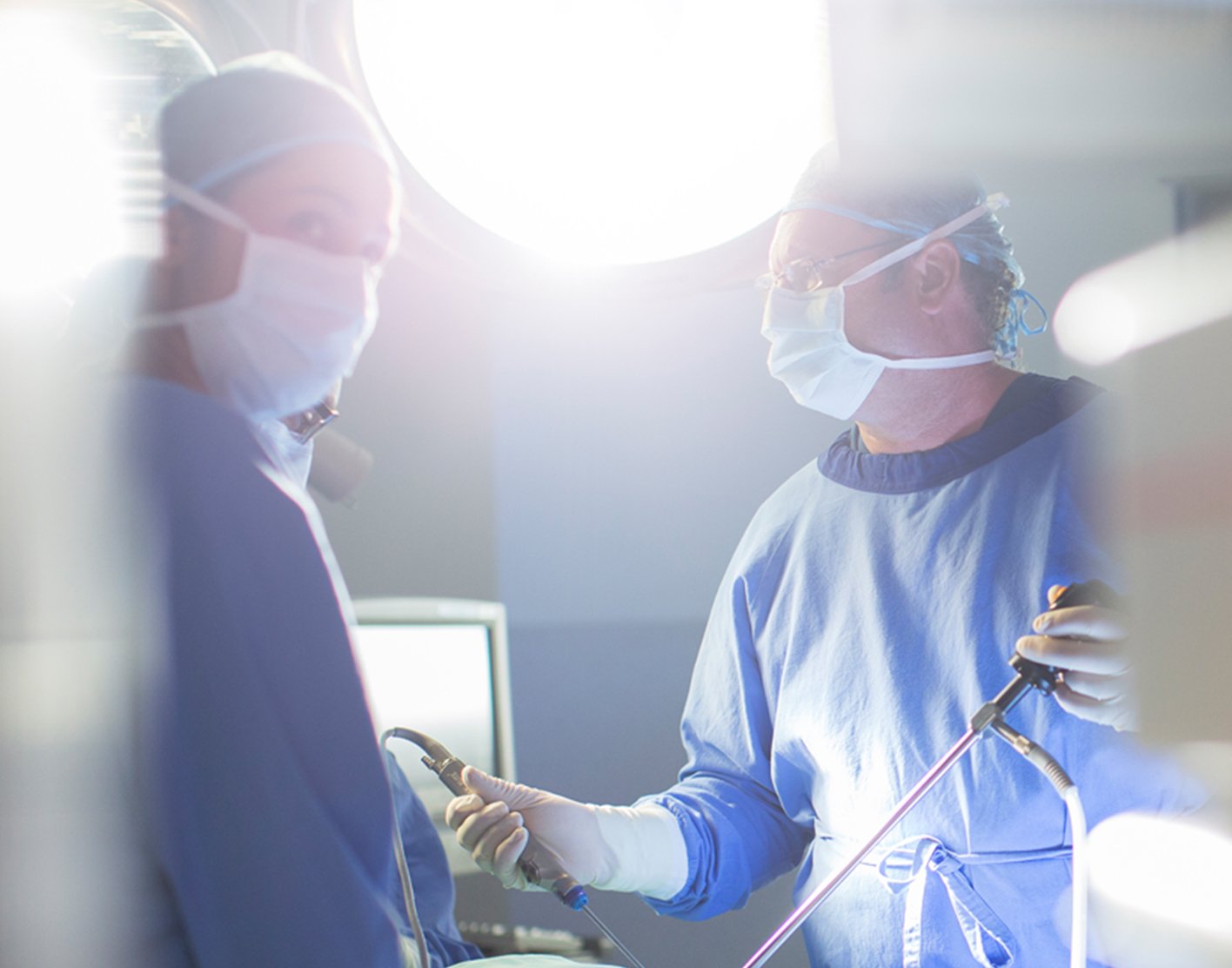
Diagnostic laparoscopy
Definition
Diagnostic laparoscopy is a procedure that allows your health care provider to look directly at the contents of the abdomen or pelvis.
Alternative Names
Laparoscopy - diagnostic; Exploratory laparoscopy
How the Test is Performed
The procedure is usually done in the hospital or outpatient surgical center under
- The surgeon makes a small cut (incision) below the belly button.
- A needle or hollow tube called a trocar is inserted into the incision. Carbon dioxide gas is passed into the abdomen through the needle or tube. The gas helps expand the area, giving the surgeon more room to work, and helps the surgeon see the organs more clearly.
- A tiny video camera (laparoscope) is then placed through the trocar and is used to see the inside of your pelvis and abdomen. More small cuts may be made if other instruments are needed to get a better view of certain organs.
- If you are having gynecologic laparoscopy, dye may be injected into your cervix so the surgeon can view the fallopian tubes.
- After the exam, the gas, laparoscope, and instruments are removed, and the cuts are closed. You will have bandages over those areas.
How to Prepare for the Test
Follow instructions on not eating and drinking before surgery.
You may need to stop taking medicines, including narcotic pain relievers, on or before the day of the exam. Do not change or stop taking any medicines without first talking to your surgeon.
Follow any other instructions for how to prepare for the procedure.
How the Test will Feel
You will feel no pain during the procedure. Afterward, the incisions may be sore. Your surgeon may prescribe a pain reliever.
You may also have shoulder pain for a few days. The gas used during the procedure can irritate the diaphragm, which shares some of the same nerves as the shoulder. You may also have an increased urge to urinate, since the gas can put pressure on the bladder.
You will recover for a few hours at the hospital before going home. You will probably not stay overnight after a laparoscopy.
You will not be allowed to drive home. Someone must be available to take you home after the procedure.
Why the Test is Performed
Diagnostic laparoscopy is often done for the following:
- Find the cause of pain or a growth in the abdomen and pelvic area when
x-ray orultrasound results aren't clear. - After an accident to see if there is injury to any organs in the abdomen.
- Before procedures to treat cancer to find out if the
cancer has spread. If so, treatment will change.
Normal Results
The laparoscopy is normal if there is no blood in the abdomen, no
What Abnormal Results Mean
Abnormal results may be due to a number of different conditions, including:
-
Scar tissue inside the abdomen or pelvis (
adhesions ) Appendicitis - Cells from inside the uterus growing in other areas (
endometriosis ) - Inflammation of the gallbladder (
cholecystitis ) Ovarian cysts or cancer of the ovary- Infection of the uterus, ovaries, or fallopian tubes (
pelvic inflammatory disease ) - Signs of injury
- Spread of cancer
- Tumors
- Noncancerous tumors of the uterus such as
fibroids
Risks
There is a risk for infection. You may get antibiotics to prevent this complication.
There is a risk of puncturing an organ. This could cause the contents of the intestines to leak. There may also be bleeding into the abdominal cavity. These complications could require immediate open surgery to treat them (
Diagnostic laparoscopy may not be possible if you have a swollen bowel, fluid in the abdomen (
References
Falcone T, Walters MD. Diagnostic laparoscopy. In: Baggish MS, Karram MM, eds. Atlas of Pelvic Anatomy and Gynecologic Surgery. 5th ed. Philadelphia, PA: Elsevier; 2021:chap 113.
Paterson HM. The acute abdomen. In: Garden OJ, Parks RW, Wigmore SJ, eds. Principles and Practice of Surgery. Philadelphia, PA: Elsevier; 2023:chap 13.
Velasco JM, Ballo R, Hood K, Jolley J, Rinewalt D, Veenstra B. Exploratory laparotomy - laparoscopic. In: Velasco JM, Ballo R, Hood K, Jolley J, Rinewalt D, Veenstra B, consulting eds. Essential Surgical Procedures. Philadelphia, PA: Elsevier; 2016:chap 1.
Review Date: 29/05/2024
The information provided herein should not be used during any medical emergency or for the diagnosis or treatment of any medical condition. A licensed physician should be consulted for diagnosis and treatment of any and all medical conditions. Call 911 for all medical emergencies. Links to other sites are provided for information only -- they do not constitute endorsements of those other sites. Copyright ©2019 A.D.A.M., Inc., as modified by University of California San Francisco. Any duplication or distribution of the information contained herein is strictly prohibited.
Information developed by A.D.A.M., Inc. regarding tests and test results may not directly correspond with information provided by UCSF Health. Please discuss with your doctor any questions or concerns you may have.



























